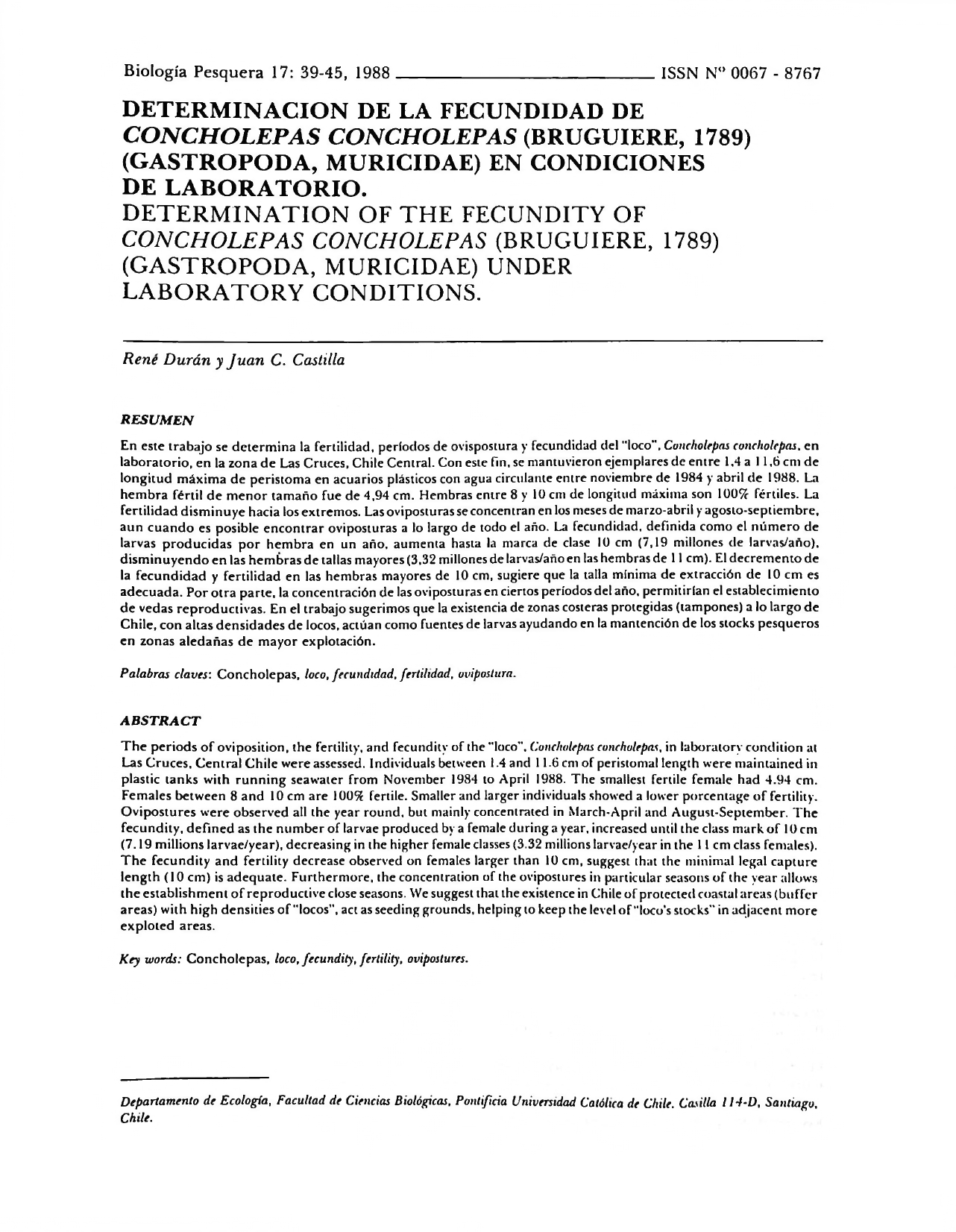DETERMINATION OF THE FECUNDITY OF CONCHOLEPAS CONCHOLEPAS (BRUGUIERE, 1789) (GASTROPODA, MURICIDAE) UNDER LABORATORY CONDITIONS
DOI:
https://doi.org/10.21703/0067-8767.1988.17.2524Keywords:
Concholepas, loco, fecundity, ferlility, oviposturesAbstract
The periods of oviposition, the ferlility, and fecundity of the "loco”, Concholepas concholepas, in laboratory condition al Las Cruces, Central Chile were assessed. Individuáis between 1.4 and 11.6 cni of peristomal length were maintained in plástic lanks with running seawater from November 1984 to April 1988. The smallest fertile female had 4.94 cm. Females between 8 and 10 cm are 100% fertile. Smaller and larger individuáis showed a lower porcentage of ferlility. Ovipostures were observed all the year round, but mainly concentrated in March-April and August-September. The fecundity, defined as the number of larvae produced by a female during a year, increased uniil the class mark of 10 cm (7.19 millions larvae/year), decreasing in ihe higher female classes (3.32 millions larvae/year in the 11 cm class females). The fecundity and ferlility decrease observed on females larger than 10 cm, suggest ihat the minimal legal capture length (10 cm) is adequate. Furthermore, the concentration of the ovipostures in particular seasons of the year allows the establishment of reproductive close seasons. We suggest that the existence in Chile of protected Coastal areas (buffer areas) with high densities of "locos”, act as seedinggrounds, helping to keep the levelof "loco’s stocks" in adjacent more
exploted areas.


